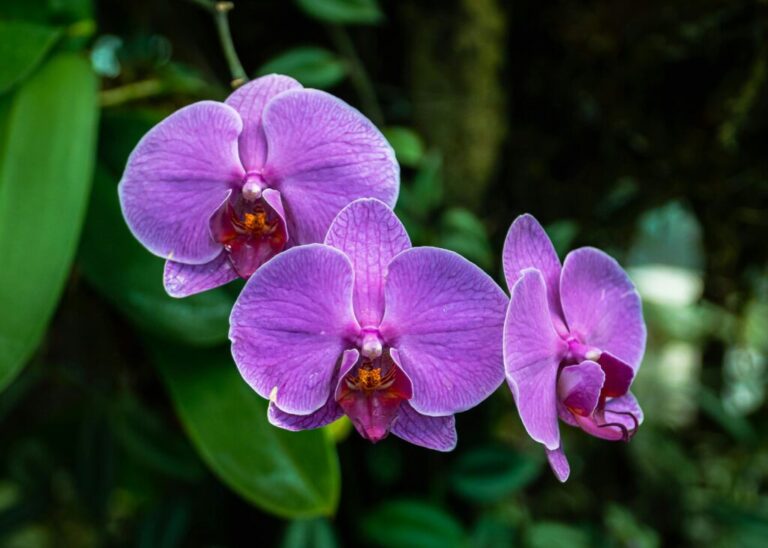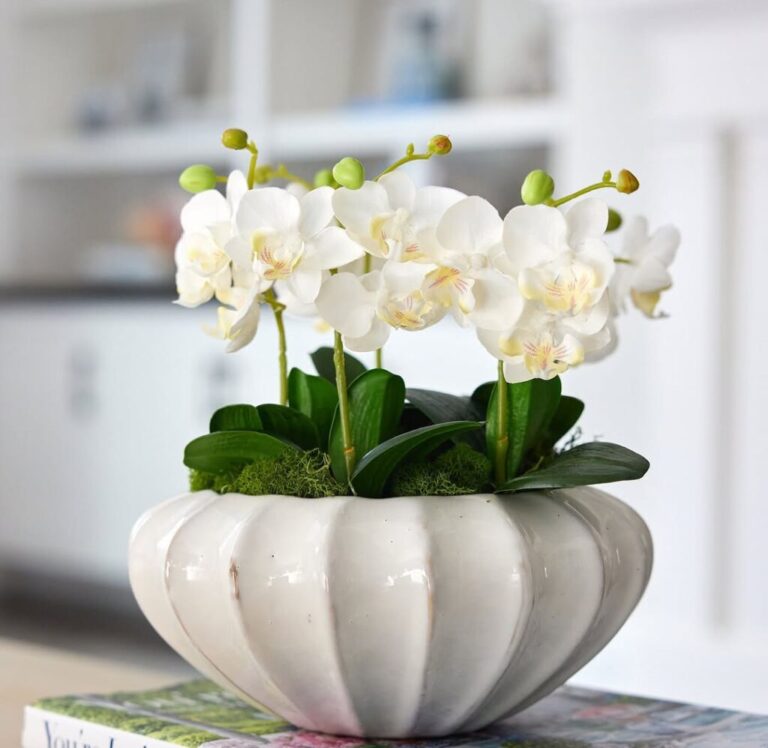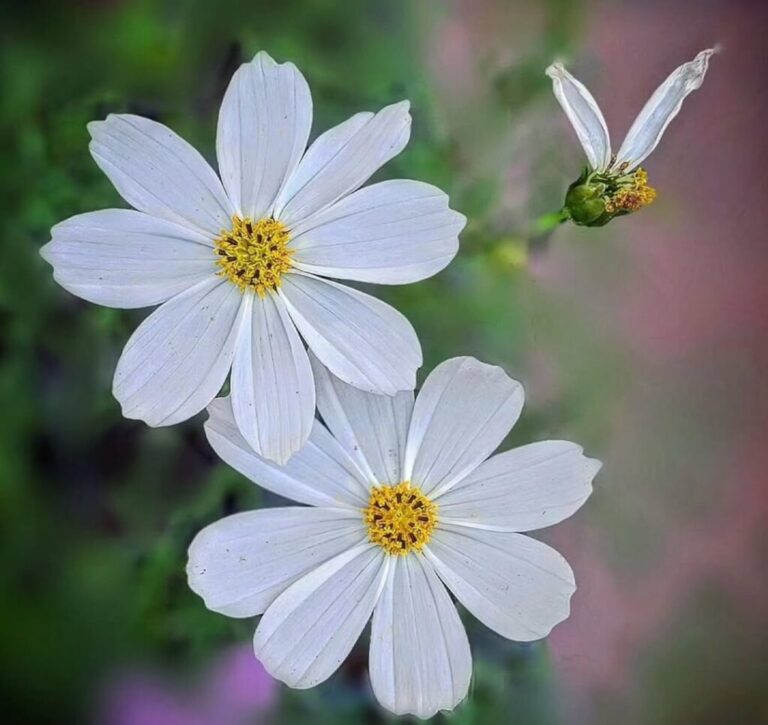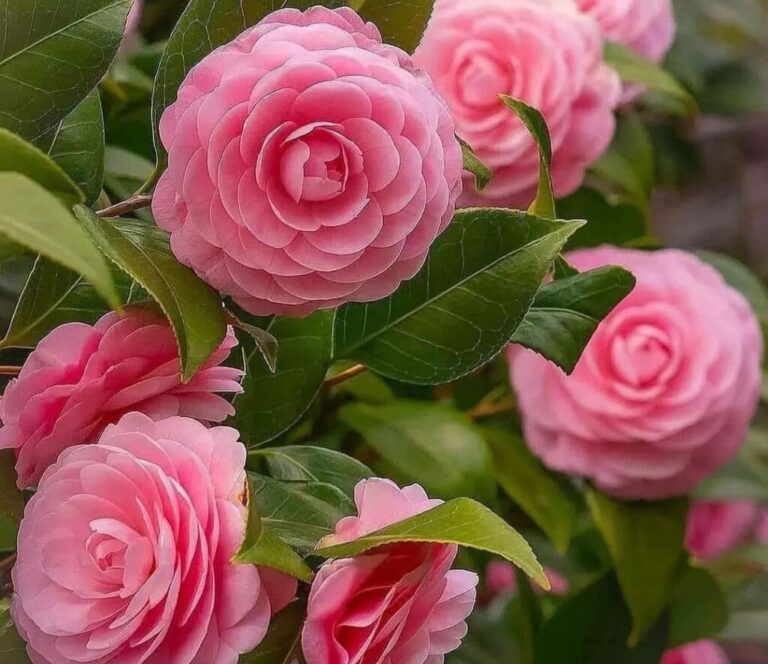Orchids are among the most stunning and delicate flowering plants, admired for their exotic beauty and long-lasting blooms. However, they can be quite sensitive when it comes to care, especially in terms of watering and root health. One of the most common and devastating issues orchid growers face is root rot—a silent killer that can weaken and eventually destroy your beloved plant if left untreated.
Root rot occurs when orchid roots are exposed to excessive moisture for too long, leading to decay caused by fungal and bacterial infections. This problem is often a result of overwatering, poor drainage, or using the wrong potting mix. While the damage may seem severe at first glance, the good news is that root rot can be treated and even prevented with the right approach. By identifying the early warning signs, taking immediate corrective measures, and adopting better care practices, you can save your orchid and help it thrive again.
In this guide, we will take you step by step through the process of diagnosing, treating, and preventing root rot in orchids. Whether you are a beginner or an experienced grower, understanding how to handle this issue will ensure your orchids remain healthy, vibrant, and capable of producing stunning blooms for years to come.

- 1 Orchid Root Rot
- 2 Root Rot Orchids
- 3 Root Rot in Orchids
- 4 Orchid Roots Rotting
- 5 How to Clean Orchid Roots
- 6 Rotten Roots in Orchids
- 7 Rotten Orchid Roots
- 8 Potential Causes of Orchid Roots Rot + How to Identify the Problem
- 9 Contaminated potting media or tools:
- 10 How to Remove affected roots:
- 11 Assess watering practices:
- 12 Improve drainage:
- 13 Apply a fungicide
- 14 Provide proper air circulation:
- 15 Monitor humidity and temperature
- 16 Personal Experience: How I Saved My Orchid
- 17 FAQ on orchids roots rot
Orchid Root Rot
Orchid root rot occurs when excessive moisture causes roots to decay, often due to overwatering or poor drainage. Affected roots turn brown, mushy, and lose their ability to absorb nutrients. To prevent root rot, water your orchid only when the potting medium is dry, and always use a well-draining mix.
Root Rot Orchids
Orchids suffering from root rot often display yellowing leaves, shriveled pseudobulbs, and weak growth. The roots, instead of being firm and green, become black and soft. If you notice these symptoms, remove the damaged roots with sterile scissors, treat with a fungicide, and repot using fresh bark or sphagnum moss.
Root Rot in Orchids
Root rot in orchids is a serious issue that can quickly kill the plant if not treated. It develops when excess moisture creates the perfect environment for fungi and bacteria to thrive. Regularly inspect your orchid’s roots, cut away any rotting sections, and allow the plant to dry before repotting.
Orchid Roots Rotting
When orchid roots begin to rot, the plant struggles to absorb water and nutrients, often leading to dehydration despite moist conditions. This problem is usually caused by stagnant water in the potting mix. The best solution is to trim affected roots, use a breathable pot, and improve airflow around the roots.
Orchid Rotting Roots
Orchid rotting roots are a clear sign of improper watering habits. Overwatering suffocates the roots, making them vulnerable to fungal infections. If your orchid’s roots are turning brown and mushy, trim the damaged parts, let the plant dry for a day, and repot it in fresh, well-aerated orchid mix.
How to Clean Orchid Roots
Cleaning orchid roots is crucial when repotting or treating root rot. Start by removing the orchid from its pot and rinsing the roots gently under lukewarm water. Using sterilized scissors, cut away any dead or mushy roots. Afterward, allow the roots to dry before repotting in fresh growing medium.
Rotten Roots in Orchids
Rotten roots in orchids not only affect the plant’s health but also increase the risk of bacterial and fungal infections. If you spot rotting roots, act quickly—remove the damaged sections, disinfect the remaining roots with hydrogen peroxide, and ensure your orchid has proper drainage to prevent future occurrences.
Rotten Orchid Roots
Rotten orchid roots are typically dark, mushy, and emit a foul odor. This problem arises from excessive moisture and poor ventilation in the root zone. To revive your orchid, trim all rotting roots, dust the cuts with cinnamon or fungicide, and repot using a fast-draining, airy potting mix.

Potential Causes of Orchid Roots Rot + How to Identify the Problem
Highlight a Common Mistakes Sections
Using regular potting soil instead of orchid mix
Not sterilizing tools before trimming roots
Watering too often instead of checking the potting mix moisture
Keeping orchids in dark corners (which weakens their immune system)
Overwatering: Orchids are susceptible to root rot if they are consistently exposed to excessive moisture. Overwatering can drown the roots and create a favorable environment for fungal or bacterial infections.
Poor drainage: If the potting medium used for your orchid does not have adequate drainage, water may accumulate around the roots, leading to root rot. It’s crucial to use a well-draining potting mix specifically designed for orchids.
Lack of airflow: Insufficient air circulation around the orchid’s roots can contribute to high humidity and moisture retention, creating conditions favorable for root rot. Stagnant air can also inhibit the drying out of the potting medium between waterings.
Inadequate light: Orchids require an appropriate amount of light to thrive. Insufficient light levels can weaken the plant, making it more vulnerable to root rot and other diseases.
Orchid Root Problems: Causes, Symptoms, and Solutions
| Cause | Symptoms | Solution |
|---|---|---|
| Overwatering | Mushy, brown roots, yellowing leaves | Reduce watering, repot in fresh orchid mix |
| Poor Drainage | Waterlogged medium, roots stay constantly wet | Use a well-draining mix, repot in a ventilated pot |
| Fungal/Bacterial Infection | Foul smell, rapid root decay | Trim affected roots, apply fungicide, improve airflow |
| Using Regular Potting Soil | Roots suffocate, lack of aeration | Switch to a specialized orchid mix |
| Low Humidity | Wrinkled leaves, slow root growth | Increase humidity with a pebble tray or humidifier |
| Too Much Fertilizer | Burnt root tips, salt buildup | Flush with clean water, use diluted orchid fertilizer |
Contaminated potting media or tools:
Using contaminated potting mix, reusing dirty tools, or introducing infected plants into your orchid’s environment can introduce pathogens that may cause root rot.
How to Remove affected roots:
To remove affected roots from your orchid, follow these steps:
Prepare your tools: Gather a pair of sterile scissors or a sharp knife, rubbing alcohol or hydrogen peroxide, and clean paper towels or cloth. Sterilizing your tools helps prevent the spread of any potential infections.
Remove the orchid from its pot: Gently remove the orchid from its pot and place it on a clean surface covered with a towel or paper towels to catch any debris or potting medium that may fall.
Assess the roots: Carefully examine the roots of your orchid. Look for signs of root rot, such as mushy or discolored roots. Healthy roots should be firm, light-colored, and have a silvery sheen.
Trim the affected roots: Using your sterile scissors or sharp knife, trim away the affected roots. Cut just above the affected area, removing any dark, mushy, or rotting sections. Ensure you make clean cuts to minimize damage to healthy roots.
Sterilize your tools: Between each cut, sterilize your tools by dipping them in rubbing alcohol or hydrogen peroxide. This helps prevent the spread of any potential pathogens.
Clean the remaining healthy roots: Once you have removed the affected roots, gently rinse the remaining healthy roots under lukewarm running water. This will help remove any debris or potting medium that may cling to them.
Allow the roots to dry: After rinsing, place the orchid in a well-ventilated area to allow the roots to dry partially. This can help prevent potential infections and promote healing. Ensure that the roots are not exposed to direct sunlight or extreme temperatures during this drying period.
Repot if necessary: If the potting medium appears contaminated or if you suspect poor drainage contributed to the root rot, consider repotting your orchid in fresh, well-draining orchid potting mix. Cho isose a pot that allows for adequate airflow and has drainage holes.
Resume care routine: After removing the affected roots and potentially repotting, resume your regular care routine for your orchid. This includes providing appropriate light, humidity, and watering based on your specific orchid species.
Assess watering practices:
Assessing your watering practices
is an important step in addressing orchid root rot. Here’s how you can evaluate and adjust your watering routine:
Understand your orchid’s needs: Different orchid species have varying water requirements. Research the specific needs of your orchid to determine its optimal watering routine. Some orchids prefer to dry out slightly between waterings, while others may require more frequent watering.
Check the potting medium: Examine the potting medium of your orchid to assess its moisture level. Stick your finger about an inch into the medium to feel if it’s dry or moist. If the medium feels damp, it indicates that it retains moisture and may be contributing to root rot.
Tip : Water only when the roots turn silvery white, and always use a pot with good airflow.”
Adjust the frequency: If you have been watering your orchid too frequently, it’s important to adjust your watering schedule. Allow the potting medium to dry out partially before watering again. Avoid a fixed watering schedule and instead monitor the moisture levels in the potting medium to determine when your orchid needs water.
Water thoroughly but avoid waterlogging: When watering your orchid, ensure that water reaches the roots thoroughly. Water the plant until water runs out of the drainage holes, but do not let it sit in a saucer or standing water. The goal is to provide adequate moisture without saturating the potting medium excessively.
Consider the environmental conditions: Environmental factors such as temperature, humidity, and air circulation can affect your orchid’s watering needs. Warmer temperatures and higher humidity levels may require less frequent watering, while drier conditions may necessitate more frequent watering. Take these factors into account when assessing your watering practices.
Improve drainage:
Improving the drainage of your orchid’s potting medium is crucial in preventing root rot. Here’s how you can enhance the drainage:
Select a suitable pot: Choose a pot with drainage holes at the bottom. This allows excess water to escape instead of accumulating in the pot. Avoid pots without drainage holes or those with insufficient drainage.
Use a well-draining potting mix: Orchids require a potting mix that promotes good drainage. There are various options available, such as orchid bark, sphagnum moss, perlite, or a combination of these materials. Avoid using regular potting soil, as it retains too much moisture and can lead to root rot.
Repot if necessary: If your orchid is currently in a pot with inadequate drainage or the potting mix has broken down and become compacted, it’s recommended to repot your orchid. Carefully remove the orchid from its current pot, gently shake off the old potting medium, trim away any dead or rotting roots, and repot it in a new container with fresh, well-draining potting mix.
Add drainage materials: If you’re repotting your orchid or want to improve drainage in an existing pot, you can include additional drainage materials. Place a layer of small stones, clay pellets, or broken pieces of pottery at the bottom of the pot before adding the potting mix. This layer helps create space for excess water to drain freely.
Avoid water retention trays or saucers: Do not allow your orchid to sit in standing water or use water retention trays or saucers. These can trap excess moisture and lead to root rot. After watering, make sure to empty any water that collects in trays or saucers.
Consider pot size: Orchids prefer to have a snug fit in their pots, as it helps with stability. However, avoid using pots that are excessively large for the size of your orchid. Excessively large pots can hold too much moisture and lead to poor drainage. Choose a pot that provides enough space for the roots to grow without excessive moisture retention.
Apply a fungicide
Applying a fungicide can help prevent the spread of fungal infections that may contribute to root rot in orchids. Here’s how you can use a fungicide effectively:
Choose the right fungicide: There are various fungicides available on the market, specifically formulated for orchids. Look for a fungicide that is safe to use on orchids and labeled for controlling fungal diseases, including root rot.
Mix the fungicide solution: Prepare the fungicide solution according to the manufacturer’s instructions. Dilute the fungicide with water as recommended, ensuring that you achieve the appropriate concentration.
Apply the fungicide: Before applying the fungicide, make sure the orchid’s roots are clean and dry. Gently remove any debris or old potting medium from the roots, taking care not to damage them further. You can rinse the roots under lukewarm water to clean them if needed, but allow them to dry partially before applying the fungicide.
Spray or soak the roots: There are two common methods for applying fungicides to orchid roots:
Spray application: Use a spray bottle to mist the fungicide solution onto the roots. Ensure that all the roots are evenly covered with the solution. Avoid saturating the roots excessively to prevent further waterlogging.
Soak application: Prepare a container with the fungicide solution and place the orchid’s roots in the solution for the recommended amount of time, as stated on the fungicide label. Gently agitate the container to ensure the solution reaches all parts of the roots. After soaking, allow the roots to drain and dry partially before placing the orchid back in its pot.
Follow safety precautions: When handling fungicides, it’s important to follow the safety guidelines provided by the manufacturer. Wear gloves, protective clothing, and consider working in a well-ventilated area.
Repeat as necessary: Follow the recommended application frequency specified by the fungicide’s instructions. It’s important to note that excessive or unnecessary use of fungicides can be harmful to the orchid and the environment, so only apply it when there is a known or suspected fungal infection.
Provide proper air circulation:
Proper air circulation is vital for orchids as it helps prevent the buildup of moisture and promotes a healthy growing environment. Here are some ways to improve air circulation for your orchids:
Positioning: Place your orchids in a location where they can receive adequate airflow. Avoid crowding them together or placing them in a closed, stagnant area. Ideally, position them in an area with good ventilation, such as near an open window, a fan, or an air vent.
Spacing: Provide enough space between orchids to allow air to circulate freely around each plant. This prevents the accumulation of stagnant air and reduces the risk of excess humidity around the foliage and roots.
Use a fan: Set up a fan in the room or area where your orchids are located. The gentle air movement created by the fan helps to promote airflow and reduces the likelihood of high humidity and moisture retention. Ensure that the fan is not blowing directly on the orchids, as excessive air movement can cause damage.
Avoid humidity traps: Be cautious about placing orchids near sources of high humidity, such as bathrooms or kitchen areas. These areas tend to have elevated moisture levels, which can contribute to excessive humidity and hinder proper air circulation. Choose a location with moderate humidity levels for your orchids.
Open ventilation: If growing orchids in a greenhouse or enclosed space, ensure that there are vents or windows that can be opened to allow fresh air to enter. This helps regulate humidity levels and prevents the buildup of stagnant air.
Remove obstacles: Check if any objects or obstacles are blocking the airflow around your orchids. Clear away any clutter, curtains, or other items that may impede the movement of air. This allows for better air circulation and prevents pockets of stagnant air.
Monitor humidity levels: Use a hygrometer to measure the humidity levels in the vicinity of your orchids. Aim for a range that is suitable for your specific orchid species. By maintaining optimal humidity, you can help prevent the growth of fungal pathogens and promote healthy air circulation.
Remember that while orchids require good airflow, it’s important to strike a balance. Avoid exposing them to excessive drafts or extreme temperature fluctuations, as these can be detrimental to their health. By providing proper air circulation, you can create an environment that reduces the risk of fungal infections, promotes healthy growth, and contributes to the overall well-being of your orchids.
Monitor humidity and temperature
Monitoring humidity and temperature is crucial for creating optimal growing conditions for your orchids. Here’s how you can effectively monitor and manage these factors:
Use a hygrometer: Place a hygrometer near your orchids to measure the humidity levels in their environment. Hygrometers can provide accurate readings and help you maintain the ideal humidity range for your orchids. Aim for a humidity range between 40% and 70%, although specific orchid species may have different preferences.
Maintain proper humidity levels: To adjust and maintain humidity levels for your orchids, consider the following methods:
Mist or spray: Use a spray bottle filled with water to mist the air around your orchids. This can increase humidity temporarily, especially in drier environments. Avoid misting the flowers directly, as it may cause damage or promote fungal growth.
Humidity trays: Your orchid pots should be set up on trays that have water and pebbles in them. Humidity levels around the plants rise when the water evaporation occurs. To avoid waterlogging, check to make sure the pots are not submerged in the water.
Humidifiers: In areas with consistently low humidity, using a humidifier can help maintain the desired moisture levels. Place the humidifier near your orchids to provide continuous humidification.
Use a thermometer: Use a thermometer to monitor the temperature around your orchids. Orchids have specific temperature requirements, so it’s important to maintain the appropriate range for your particular species. In general, most orchids thrive in temperatures between 60°F and 80°F (15°C to 27°C).
Adjust temperature conditions: To regulate temperature effectively, consider the following measures:
Locate strategically: Position your orchids in a location that provides the appropriate temperature conditions. Avoid placing them near drafts, heating or cooling vents, or windows that receive direct sunlight or cold drafts.
Supplemental heating or cooling: In extreme climates, you may need to provide supplemental heating or cooling to maintain suitable temperature ranges for your orchids. Use heaters, fans, or air conditioning units as necessary.
Personal Experience: How I Saved My Orchid
I once had an orchid that was struggling with root loss. The leaves were limp, and the roots had almost completely dried out. After some research, I decided to use Orchid Focus Grow to encourage root regrowth. I soaked the orchid’s roots in a diluted solution and misted the base every few days. And remaining solution I sprayed on orchids which are mounted on a tree . after few days i saw new roots.
Within a few weeks, I noticed new root tips forming! Slowly but surely, my orchid regained its strength, and today, it’s thriving with healthy green roots and fresh blooms. If you’re dealing with a similar issue, patience and the right care routine can make all the difference!
Final Thoughts: Give Your Orchid the Best Chance to Thrive
Caring for orchids might seem challenging at first, but with the right approach, even struggling plants can make a full recovery. By avoiding common mistakes, using the right care techniques, and being patient, you can bring your orchid back to life and keep it blooming for years to come.
If your orchid is facing root loss, remember that proper hydration, good airflow, and a balanced fertilizer like Orchid Focus Grow can make all the difference. Stick to a routine, observe your plant’s progress, and don’t be afraid to adjust your care as needed.
FAQ on orchids roots rot
What causes orchids roots rot?
Orchids roots rot is primarily caused by excessive moisture and poor air circulation around the roots. Overwatering, using non-draining pots, and compacted or decayed potting media can suffocate the roots, leading to fungal or bacterial infections. When orchids roots rot, the roots turn brown or black, become mushy, and lose their firmness, preventing the plant from absorbing water and nutrients properly.
How do I know if my orchid has root rot?
If orchids roots rot, the symptoms include yellowing leaves, a weak and drooping plant, and mushy, dark-colored roots. Healthy orchid roots are firm and green or silvery-gray, depending on their moisture level. If you notice a foul smell, the decay has progressed significantly, and immediate action is needed to save the plant.
Can orchids recover from root rot?
Yes, orchids can recover if the damage is not severe. When orchids roots rot, the key to recovery is removing all affected roots with sterilized scissors, allowing the plant to dry for a few hours, and repotting it in fresh, well-draining orchid mix. Reducing watering frequency and improving airflow can help prevent future issues
What is the best way to prevent orchids roots rot?
Preventing orchids roots rot starts with proper watering habits and a well-draining potting mix. Water only when the top inch of the medium feels dry, use a pot with drainage holes, and ensure adequate air circulation. Regularly check the roots for signs of rot and replace the potting mix when it starts breaking down.
Should I cut off all rotten roots from my orchid?
Yes, when orchids roots rot, all mushy and dark roots should be removed using sterilized scissors or pruning shears. If any affected roots are left, the rot can spread, leading to more severe issues. After trimming, let the plant dry for a few hours before repotting in a fresh medium.
What type of pot is best to avoid orchids roots rot?
To prevent orchids roots rot, use a pot with ample drainage and airflow. Clear plastic pots with multiple drainage holes are ideal because they allow you to monitor root health and moisture levels. Clay or terracotta pots also help by wicking away excess moisture, reducing the risk of overwatering.
Can I use hydrogen peroxide to treat orchids roots rot?
Yes, hydrogen peroxide can help treat orchids roots rot by killing bacteria and fungi. After trimming off the rotten roots, you can apply a diluted hydrogen peroxide solution (3%) to disinfect the remaining healthy roots. However, it should not be used excessively, as it can damage delicate root tissues.
How often should I water my orchid to prevent orchids roots rot?
Watering frequency depends on the orchid species, humidity, and temperature. In general, water Phalaenopsis orchids once a week and Cattleya or Dendrobium orchids every 7-10 days. Always check the moisture level before watering, as overwatering is the leading cause of orchids roots rot.
Can root rot spread to other orchids?
Yes, if orchids roots rot due to fungal or bacterial infections, the pathogens can spread through water splashes, contaminated tools, or shared potting media. Always sterilize cutting tools, avoid sharing water sources, and quarantine affected plants to protect healthy orchids.
What is the best potting mix to prevent orchids roots rot?
A well-draining orchid mix is essential to prevent orchids roots rot. The best mix includes bark, sphagnum moss, perlite, and charcoal, which allow air circulation while retaining the right amount of moisture. Avoid regular potting soil, as it retains too much water and suffocates the roots.
Why do orchids roots rot in moss?
Orchids roots rot in moss if it becomes overly compacted or retains too much moisture. While sphagnum moss helps with hydration, it can stay wet for too long, leading to suffocated and rotting roots. If using moss, ensure it dries out between waterings and repot the orchid every 1-2 years
If I think my orchid may have root rot, should I repotting it?
Yes, repotting is crucial when orchids roots rot. Remove the affected roots, let the plant dry, and repot it in fresh, well-draining medium. Avoid watering immediately after repotting—let the roots recover for a few days to reduce stress and prevent further rot.
Can cinnamon help with orchids roots rot?
Yes, cinnamon is a natural antifungal treatment that can help when orchids roots rot. After trimming off the rotten roots, applying ground cinnamon to the cut areas can prevent fungal infections and aid in healing. However, avoid getting it on healthy roots, as it may dry them out.
How does airflow affect orchids roots rot?
Good airflow is crucial in preventing orchids roots rot. Stagnant air creates a humid environment where fungal and bacterial infections thrive. Placing a small fan near your orchids or keeping them in a well-ventilated area can help reduce excess moisture and promote healthier roots.
Can over-fertilization cause orchids roots rot?
Yes, excessive fertilization can contribute to orchids roots rot by causing root burn. High salt buildup from fertilizers can damage root tissues, making them more susceptible to rot. Use a balanced orchid fertilizer at half-strength and flush the potting medium with water monthly to remove excess salts.








